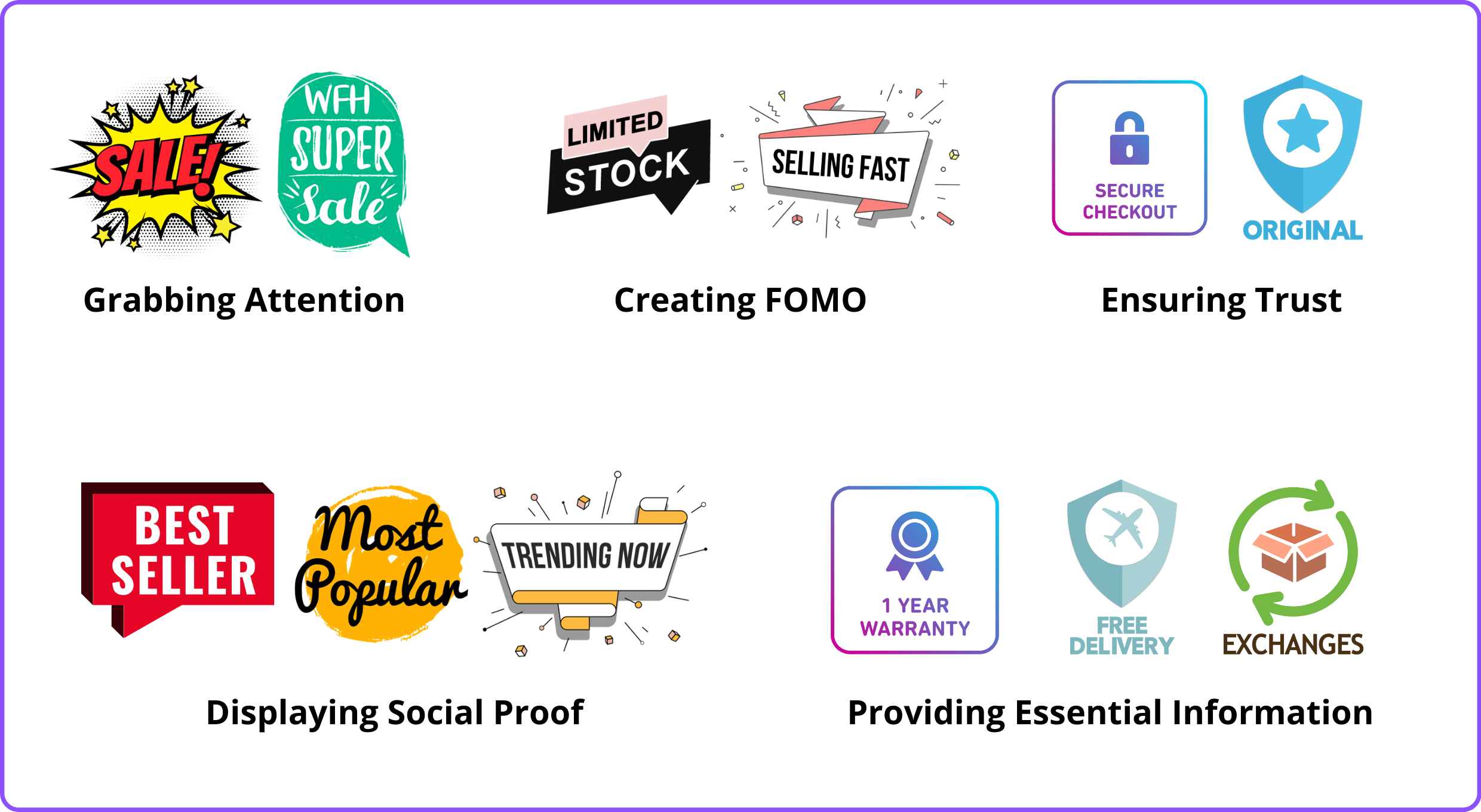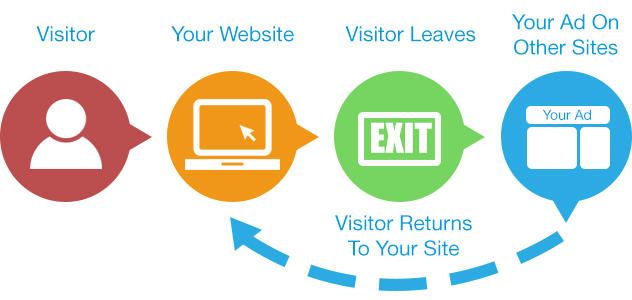There are a LOT of online stores selling different variations of products today...so can you blame customers for being constantly drawn to “window” shopping? Not really...in fact, you might find yourself being a serial browser on e-commerce websites yourself - we know we do!
There’s a lot you can do, however, to tempt these window shoppers into customers - and if you usually find a high satisfaction level with your products, most of those customers will also turn into brand loyalists.
Now, we’ve made sure that our advice isn’t difficult to implement and basically includes simple updates that you can make to your store and marketing strategy.
Let’s get into it.
1. Use product labels as shopping cues
You may have heard about using product labels to highlight new arrivals, sale items, etc., but did you know this actually works as shopping cues? The sale product badges create urgency and FOMO in the mind of your customer. Similarly, labels such as ‘bestseller’ and ‘trending now’ tell customers how popular those products are, so they may be influenced into choosing them too. In fact, we’ve found that product labels actually help increase sales by 15%.
There are 5 main types of shopping cues that you can create with product labels or badges, and these include:
- Grabbing attention (with noticeable stickers that highlight a sale or new collection)
- Creating FOMO or scarcity (making the customers want to buy right away)
- Displaying social proof (urging customers by displaying the popularity of a product)
- Ensuring trust (with assurances of decision-makers such as secure payments and authentic products)
- Providing essential information (telling customers about free shipping or easy payment plans, for example)

2. Use smart marketing to attract the right customers
When marketing your products on social media and elsewhere, making sure you’re truly representing the essence of your brand. If you’re a premium homewares brand, for example, the exclusivity of your products should shine through in your marketing. When using digital advertising, you also need to make sure you’re targeting just the right people.
This helps ensure that the people who come to your store will truly be interested - and inclined - to buy your products.
Marketing tactics to bring in more qualified traffic
- Influencer marketing (this can get expensive, but helps you connect with like-minded audiences)
- Brand collaborations (identify like-minded brands that have a similar target audience for marketing or product collaborations)
- Digital advertising (this allows you to more precisely target just the right customers to bring on to your Shopify store)
3. Don’t be a passive observer of your store browsers
Your Shopify analytics gives you a good idea of the customers coming into your store, browsing your products and then leaving without buying everything. Checking your analytics is step 1 - step 2 is doing something about it!
Here are a few ways to better engage the window shoppers that visit your store:
Product recommendations
Maximise the number of products that your customers are exposed to on your store. If they’ve visited before, show them previously viewed products. If they visit a product details page, share complementary product recommendations. Another great idea is to show shoppers what’s being bought on your store in real-time by other buyers - it goes by the idea of social proof we mentioned earlier.
Incentives
Some brands are known for their frequent incentives and this certainly helps convert customers. Keep in mind your pricing strategy though - you don’t want to dilute your brand.
Remarketing
When a customer comes to your website and leaves without browsing, you can run ads to draw them back to the products they were looking at - and you can also add a discount code as an added incentive.

4. Create a community around your brand
Let’s take social proof to the next level. One of the most effective ways to sell a product is to create a visible “club” of users around it...a collection of people that best represent the kind of customers you envision your brand to have. It need not be upscale or exclusive - it only needs to consist of people who truly personify your brand.
With online publishing, marketing, and word of mouth, you’ll find that this community will begin to attract like-minded folks who also want to be part of the club.
What will this community look like in the world?
- A social media group that interacts digitally
- A forum of customers that support each other and help each other on your website
- Customers that talk about your brand on their social media channels
How you should get started with this community:
- Start by identifying the main platform you’d like to create for interaction - such as the forum on your website
- Give it a bit of fodder to begin with, if needed
- Next, reach out to all your customers via email and hook them into interacting with you on the platform
- Incentivize them to refer their friends and bring them along to your community
- Hold regular engagement activities and events to keep them hooked!
How this helps turn traffic into sales:
Creating a community helps you draw in just the right customers and then acts as the strongest indicator of social proof - it not only draws paying customers into your store but also instinctively urges browsers to make a purchase.
5. The IRL Answer (Info, Reviews & Logistics) for how to increase sales on Shopify
When choosing a product online, customers look for plenty of details about it so as to try to gauge it’s look and feel in real life. In the same quest, they look for customer testimonials that tell them whether to believe your claims. And lastly, one of the most important decision drivers is, in fact, the logistics - offering free shipping (at least over a certain purchase amount), for example, makes a BIG difference to shoppers.
Information
The more product information you offer, the better. Make sure you provide the product size (with a reliable size guide for clothing), its composition/material, its origin (if relevant), and its price. Showcase the product from different angles in the images and try to include a quick video too.
Reviews
Customers believe other customers more than they’ll believe you. In fact, big brands have been broken on the backs of a negative review. So if you’re wondering how to increase sales on Shopify, trust us when we say that reviews make a big difference. Do make it a point to engage with all reviewers as soon and regularly as possible.
Logistics
The logistics of the purchase make a big difference to customers. Do you offer free shipping and returns, do you offer verified payment options, how long do you take to deliver, and are there any hidden costs? These are all details that you must provide upfront on your website to instill trust. If you have premium-priced products, a tie-up with a zero-interest staggered payment provider (in keeping with your brand personality).
[Shameless plug: At ModeMagic, we also do stickers for logistical information such as free shipping and returns - making it easy breezy to provide the needed information!
Conclusion
So we hope you now know how to increase sales on Shopify! It takes a fair bit of analysis and then experimentation & effort. Once you’ve got it right, however, it turns into a snowball effect - the happy customers who have enjoyed your store will share it with their friends and so on...until you no longer have to make it your life’s mission to convert your traffic into buying customers (it may need to be the quarterly mission once in a while, though).






